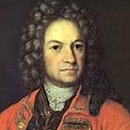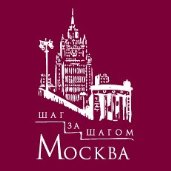The Marfo-Mariinsky Convent
06.07.2015 15:54 Просмотров: 85
 The angel standing on a cloud has blue wings and a lily in his hands. The angel is painted on a column in the Church of the Intercession of the Mother of God in the Marfo-Mariinsky Convent in Moscow.
The angel standing on a cloud has blue wings and a lily in his hands. The angel is painted on a column in the Church of the Intercession of the Mother of God in the Marfo-Mariinsky Convent in Moscow.
It is in the Zamoskvorechye district. Zamoskvorechye means beyond the river and the division created by the Moscow River between the two banks is not only physical. This area south of the Kremlin retains a different atmosphere, that of an architecture of narrow streets, small houses, old mansions, museums and churches somehow escaped to the monumental ambitions of the Soviet regime.

Here, in February 1909, the Grand Duchess Elizaveta Feodorovna (1864-1918), born Elisabeth of Hesse-Darmstadt, widow of the Grand Duke Sergei Alexandrovich of Russia (1857-1908), son of Tsar Alexander II, established a religious female community: the Martha and Mary Convent of Mercy. After the murder of her husband, she had withdrawn from social life devoting her time to prayers and charitable works. The now useless precious jewels and works of art were sold to finance the creation of the Convent and the surrounding buildings, which included a pharmacy, a hospital, and, later, a school and an orphanage.
The main church, designed by Aleksei Shchusev (1873-1949), was completed by 1912: a small and elegant building that renewed the traditional architecture with its black onion-like cupolas, pure white walls and narrow windows. Carvings with abstract and folkloristic patterns decorate the outer walls. Elizaveta Feodorovna asked Mikhail Nesterov (1862-1942) to work at the murals inside the church. Her attention to these aspects reveals the importance she attributed to art to convey her ideal, to tell a story never repeated enough. The story of Martha and Mary, the two biblical sisters who had welcomed Christ in their home, Martha taking care of Him and Mary listening to His words. Their example inspired the Community, work and contemplation were its driving principles, written in the Regulations redacted by Elizaveta Feodorovna, the first abbess, and practiced with dedication and determination in everyday life.

In the murals painted by Nesterov and his assistant Pavel Korin (1892-1967), Martha and Mary are young women with sad and attentive eyes, and long dresses whose blue and golden shades dominate the white walls. Nesterov combined the symbolic blue, the colour of the Virgin's mantle, to expressive faces far from the idealized images of the icons. He used real people as models in peaceful compositions full of beauty and humanity surrounded by the quiet breath of nature.
But, the beginning was an Angel with a lily in his hands.


See other:
 Moscow legends about count Bruce
We will tell you about one of the most remarkable Moscow residents, a contemporary of Peter the Great, Count Bruce, whose life gave rise to a great number of legends, m... Подробнее...
Moscow legends about count Bruce
We will tell you about one of the most remarkable Moscow residents, a contemporary of Peter the Great, Count Bruce, whose life gave rise to a great number of legends, m... Подробнее...  History of Moscow Monuments Moscow monuments....there are quite a lot of those in our city! Well, first of all let's get clear - there are so many monuments in Moscow that listing them all would pro... Подробнее...
History of Moscow Monuments Moscow monuments....there are quite a lot of those in our city! Well, first of all let's get clear - there are so many monuments in Moscow that listing them all would pro... Подробнее...  Eliseevsky Store in Moscow Eliseevsky store is probably one of the most famous stores in the entire Moscow. Do me a favor, if you're strolling along the beautiful Tverskaya st., don't forget to fin... Подробнее...
Eliseevsky Store in Moscow Eliseevsky store is probably one of the most famous stores in the entire Moscow. Do me a favor, if you're strolling along the beautiful Tverskaya st., don't forget to fin... Подробнее...  Bolotnaya Square
The name of the area, Boloto (literally meaning the marsh), was known since the 14th century, when it was located in the meadows on the low bank of the Moscow River and... Подробнее...
Bolotnaya Square
The name of the area, Boloto (literally meaning the marsh), was known since the 14th century, when it was located in the meadows on the low bank of the Moscow River and... Подробнее...  Vladimir Vysotsky remembered
Vladimir Vysotsky's legacy comprises of over 600 songs and over 100 poems. He sang his songs with the accompaniment of a “Russian” seven-string guitar.
Подробнее...
Vladimir Vysotsky remembered
Vladimir Vysotsky's legacy comprises of over 600 songs and over 100 poems. He sang his songs with the accompaniment of a “Russian” seven-string guitar.
Подробнее... Our Friends
Contact us
E-mail: admin@anothercity.ru








